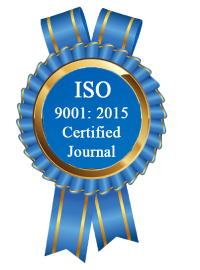| All | Since 2020 | |
| Citation | 172 | 110 |
| h-index | 7 | 5 |
| i10-index | 1 | 0 |
WJERT Citation 
Login
News & Updation
Abstract
COMPARATIVE STUDY OF RECYCLED CEMENT CONCRETE USING DEMOLISHED AGGREGATES (FINE AND COARSE) WITH CONVENTIONAL CEMENT CONCRETE TO REDUCE ENVIRONMENTAL PROBLEM CAUSED BY DEMOLISHED CONSTRUCTION WASTE DEPOSITS
Ngirabakunzi Claver*, Irambona Theodose, Niyonagira Dorcas, Iragena Regis, Maniraguha Alphonse and Munyaneza Sicien
ABSTRACT
Construction demolitions wastes (CDW) generated from construction industries, most times end up in damping sites (including landfills and swamps) where they contaminate the environment. As the global demand for concrete increases with a consequential increase in the consumptions of its components, the use of alternative materials as components in concrete will create a pathway to meet the future demand for concrete. One of the sustainable way forward is replacing the most voluminous component of concrete (i.e. aggregates) with CDW. However, in order to use CDW as aggregates, it needs to undergo processing which turns it into recycled aggregate (Adeyemi,2010). The construction industry in Rwanda especially Kigali city has shown rapid growth due to Kigali City Master Plan (KCMP). The common construction material currently used in urban area is concrete that can be broken during construction or demolishing activities. Demolition work generates construction waste materials that should be well deposited and managed otherwise they highly affect environment in different ways including environmental degradation caused by the activity of materials extraction and later by damped demolished wastes. This study was mainly aimed on comparative study on compressive strength of normal cement concrete and cement concrete made by recycled aggregates and how we can decrease the amount of construction waste materials which are still big problem in its disposal conditions by reusing construction and demolition wastes. The work composed of the collection of samples of concrete wastes, which were crushed, batched and mixed with a proportion of 1:1.7:2.7. Then recycled coarse and fine aggregates were used in casting concrete cubes having dimension 150mm×150mm×150mm to be compared by concrete cubes casted using normal coarse and fine aggregates. The results from the test with prepared concrete cubes at 28 days showed that the average compressive strength of concrete cubes of normal coarse and fine aggregates was 31.815 N/mm2 while the average compressive strength of concrete cubes of recycled coarse and fine aggregates was 28.339N/mm2. With this results, researchers found that the concrete material from recycled coarse and fine aggregates have 10.9% compressive strength lesser than that of concrete material from normal coarse and fine aggregates. Researchers conclude that the concrete material composed of recycled coarse and fine aggregates due to its less compressive strength, it should be used in pavement blocks, drainage system construction, light weight building construction so as to minimize the huge quantity of construction and demolition waste (C&D wastes) IS 4031 (Part-1):1988.
[Full Text Article] [Download Certificate]
